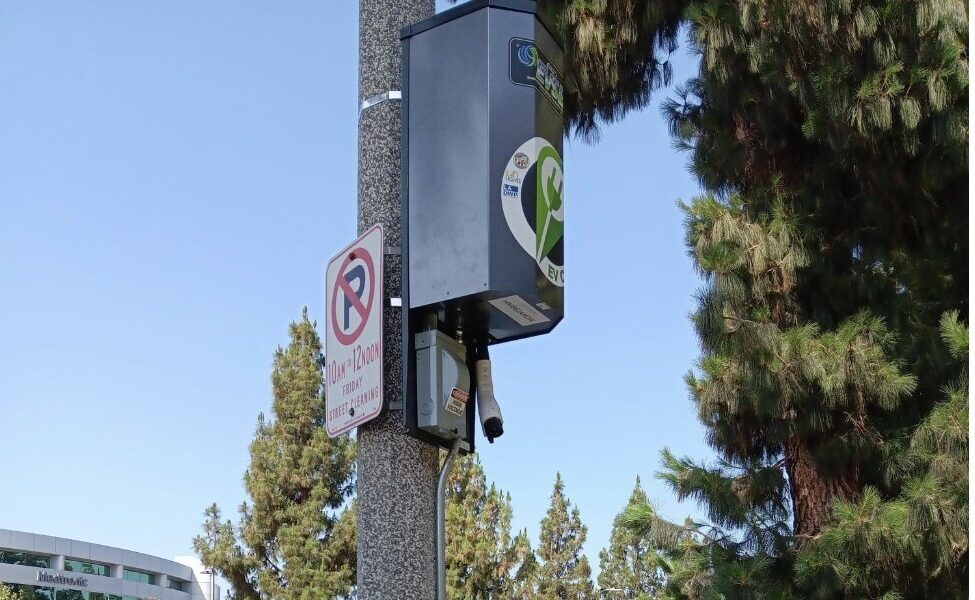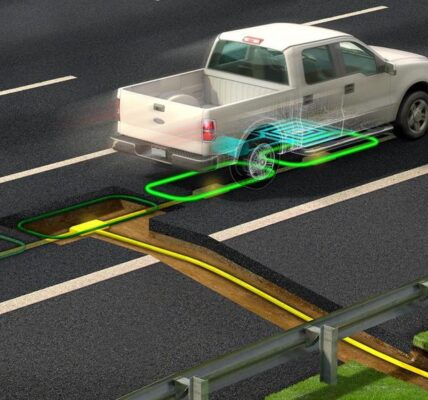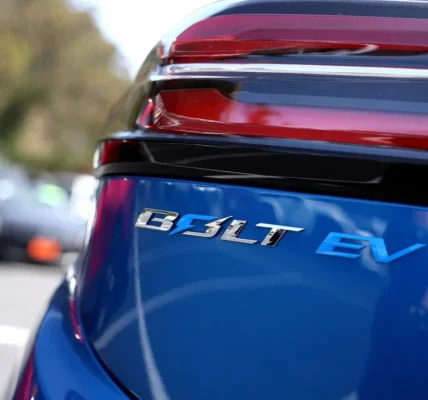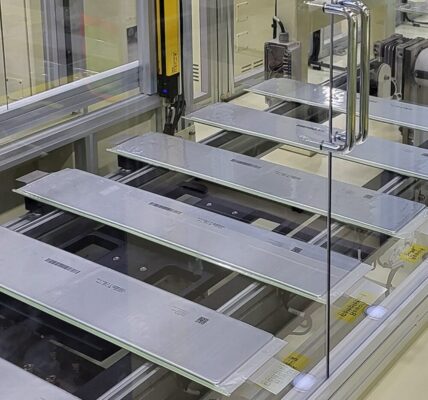AmpUp and EVSE, a division of Control Module, which designs and manufactures patented, retractable-cable EV charging stations and support equipment, has introduced an expanded deployment for the Los Angeles Bureau of Street Lighting (LABSL) providing Level 2 EV chargers for an additional 150 existing streetlight poles throughout LA communities.
EVSE offers a light pole-mounted EV solution that can be installed on existing or new structures. EVSE said this solution can lower installation costs by up to 70% compared to ground-mounted stations by eliminating digging-related construction and reducing the need for electrical wiring. Installed above grade at 10 feet, the 25-foot cable descends upon activation and retracts when unplugged from the vehicle.
“Pole-mounted chargers make EV charging more accessible to a broader population, including those living in multi-unit dwellings or areas where traditional charging stations are scarce,” Dean Spacht, vice president of sales and marketing of EVSE, said. “While our patented retractable cable design addresses the city’s urban safety and vandalism concerns, AmpUp’s platform adds reliability and a crucial layer of grid intelligence. Their demand response feature allows for managed loads during peak demand, supporting grid stability.”
LABSL oversees the city’s lighting infrastructure, featuring over 220,000 lighting poles. The LABSL streetlight EV charging program began with a mayoral target to install 10,000 EV chargers throughout the city, alongside a BSL initiative to replace existing bulbs with LEDs. The bulb switch significantly reduces electricity demand for lighting, freeing up capacity for other uses such as EV charging, LABSL said. The chargers are integrated into the existing streetlight infrastructure, utilizing 240-volt electrical service without requiring upgrades.
By integrating EV charging within existing streetlights, LABSL said it aims to support the mandate set by the Mayor’s “Sustainable pLAn,” which targets a 25% increase in EV adoption by 2025 (adding 100,000 new electric vehicles), 80% by 2035, and 100% by 2050.








